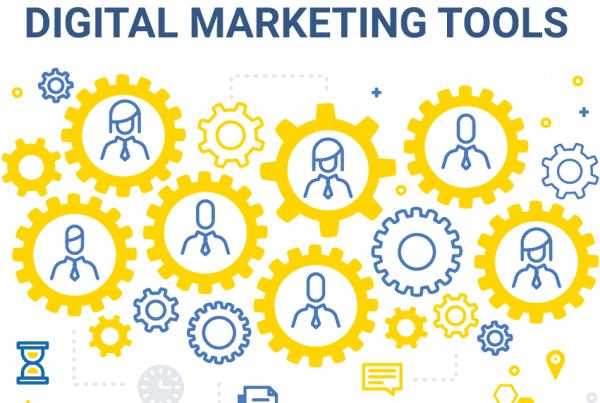This article was originally published in Upstate Business Journal.
No business is exempt from a digital marketing strategy in 2018.
I’ve got a good friend who refers to digital devices as glowing rectangles. It’s an interesting way to think about it… whether you’re holding a phone or tablet, staring at a laptop or a widescreen monitor, all of these are, in essence, glowing rectangles.
Take a moment and think all the way back to last year. How often did you find yourself in front of a glowing rectangle? How many hours of the day did you spend with it in the palm of your hand? Sitting at your desk with it in front of you? The average American spent 5 hours per day on their mobile device in 2017.
The Bureau of Labor and Statistics reports that the average American sleeps for about 8 hours and 43 minutes per day. Doing some quick math, this would mean the average American spends nearly half of their waking hours focused on a glowing rectangle.
Imagine for a moment: you are a business leader and your goal is to get eyes on your brand – to increase awareness and demand for your products and services. Where do you look to do this? How do you accomplish your goal?
There are numerous answers to these questions. One thing is absolutely certain: no matter your industry, product, or service, you must meet your audience where they are. And that means you cannot successfully promote your business without a strategy that incorporates glowing rectangles.
A digital marketing strategy is far more than just throwing up a website or following the latest trends you read in a business magazine. In fact, blindly following the “Go do this! It’ll change everything!” bus can lead to a lot of unmet expectations and wasted resources. The best digital strategies are built by asking a series of critically important questions:
1) Who will buy from you?
The easy answer is “everyone”, but that’s likely not the case. Think about your existing clients. What types of companies buy from you? Are there individual demographics, such as gender, age, level of education, income level? Common job titles? Frequent ZIP codes of buyers?
2) Why do customers buy what you’re selling?
In what situation do your customers need your product or service? What precipitates the need for your product or service? Is there a certain trigger point where they can’t live without what you sell? Or is it an everyday need? Sure, you know that people need what you sell – but what actually motivates your customers to buy it?
3) Why should customers buy from you?
You think you’re awesome. You believe wholeheartedly that you are the best vendor. Most of us think that about ourselves. The problem is nobody else knows that. Think beyond buzz words like “reliable”, “trustworthy”, and “high quality”. If your product or service isn’t those things, you should really do yourself a favor and either fix it or close shop. You have to ask yourself “what really sets me apart?” What makes you unique versus your competitors? Be honest – it’s easy to trash your competition, but if others are buying from them, chances are they’re not as bad as your think. Or, the reasons you think a consumer shouldn’t work with your competition simply don’t matter to your buyers.
These three questions are the foundation of any solid marketing strategy. When answered well, they tell you what you need to build that strategy. The first question gives you a profile of your buyer, which then helps you determine where you can reach them. For example, if your primary demographic is teenagers, you can quickly rule out LinkedIn as a primary way to get your brand in front of them.
It’s easy to listen to the hype surrounding digital marketing — services like SEO, AdWords, retargeted ads, geofencing, social media, and iPhone apps – and want to try them all. Most likely, you’ll end up a lot poorer with little to show for it. Being strategic is critical; while it’s more intensive than going forward without a strategy, it typically has a far better payoff than throwing money against a wall, waiting for it to give you a return.
The next time you glance over and see someone peering into a glowing rectangle, take a moment to ask yourself, “Do I have a well-thought- out strategy for reaching my buyers through those?” And if you think you don’t need to reach your buyers through those rectangles, just remember how much time we spend on them regularly, and how many opportunities that gives brands to influence our decision making.
Start the Conversation
Interested in learning more about how to improve your digital marketing?



